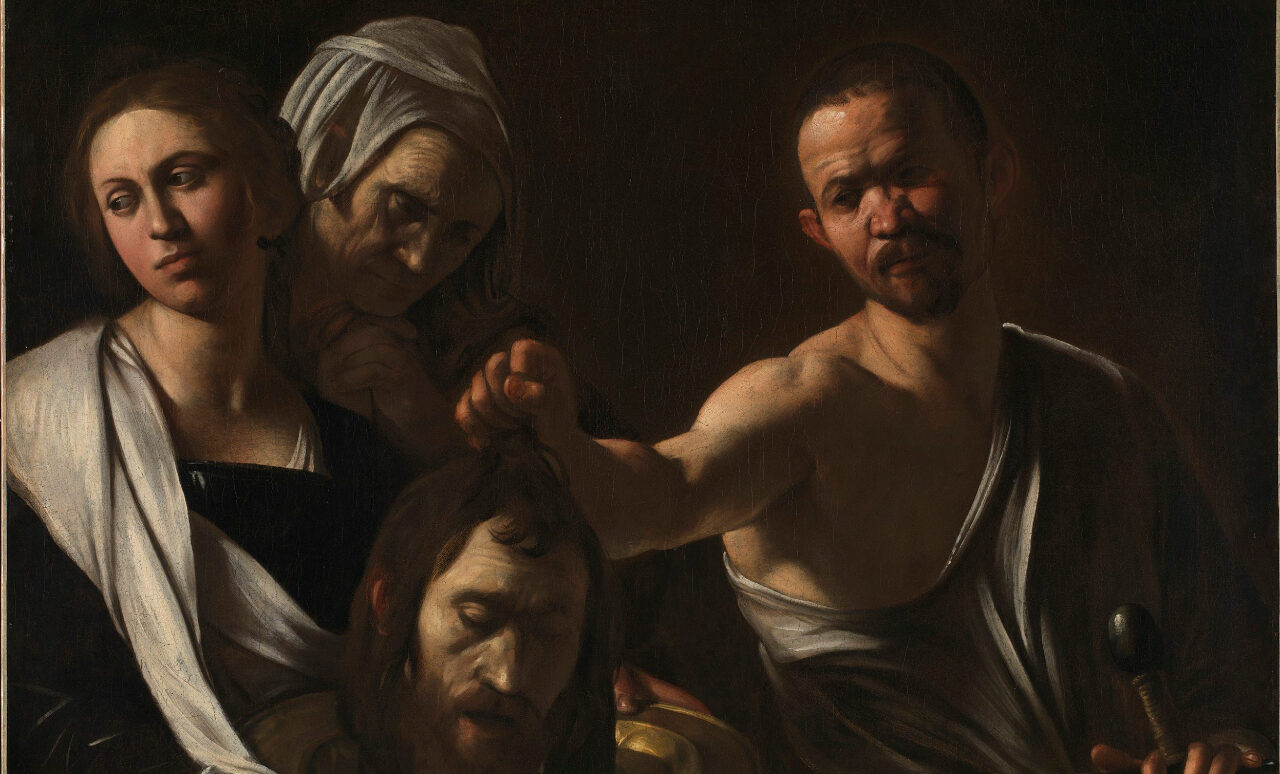The Last Caravaggio at the National Gallery

We’ve all been watching Netflix’s Ripley, inspired by Patricia Highsmith’s thriller, The Talented Mr Ripley. The series follows Tom Ripley, an unsuccessful con artist who travels to Italy to befriend Richard Greenleaf, the affluent son of an American shipping magnate. What begins as a trip ends with Ripley living a stolen life along the picturesque Amalfi coast. Throughout the show, the art of Caravaggio recurrently emerges, first in Naples and then Rome. This decision is hardly coincidental, given the series’ pronounced film noir style – Caravaggio’s works could not be more suited to an atmosphere of murder and intrigue. The artist’s profound impact on visual storytelling continues to resonate, influencing generations of filmmakers and photographers. Today, our enduring fascination with this enigmatic painter extends to an exhibition at the National Gallery.
The Last Caravaggio introduces us to The Martyrdom of Saint Ursula, believed to be Caravaggio’s final work. This painting, once hidden in a private collection and initially unrecognised, was discovered in the mid-20th century and bought by Banca Commerciale Italiana in 1972 for a modest eight million lire. A letter on display beside the painting recounts how Caravaggio, a fugitive, urgently completed this work in Naples on 11th May 1610. It was delivered fresh to Lanfranco Massa, who nervously dried it in the sun, concerned about the varnish softening too much.
Caravaggio’s portrayal of Ursula deviates entirely from usual interpretations of the story, focusing sharply on a vivid, close-up scene of her martyrdom, surrounded by five figures. St Ursula looks down in shock at the injury caused by a pagan prince’s arrow. The arrow has just struck her heart, yet her body has quickly turned pale and bloodless. She appears ghostly, pale, horrified by the lethal wound in her chest. Surrounding her, onlookers open their mouths in horror, men scramble to support her and a hand reaches out futilely to intercept the arrow.
Ursula is displayed next to the gallery’s own Salome Receives the Head of John the Baptist, another painting with a mysterious provenance, acquired in 1970. In this artwork, Salome has just received John the Baptist’s head from the executioner following her Dance of the Seven Veils, turning her face away from her grim reward. Thus, we are presented with two Caravaggio heroines: one innocent and wounded, the other manipulative, with a regretful smirk – what a delight.
Ursula is in no doubt the centrepiece of the exhibition. Although not in pristine condition – with large sections appearing blurred and others messily overpainted – it remains a compelling masterpiece. The arrow striking Ursula seems almost spectral, and her skin unnaturally grey. The scene unfolds in the darkness of night – and the National Gallery presents it as such. The painting hangs in a minimalist environment, flanked only by a few documents. Here, visitors encounter a powerful tableau of anger, violence, death and guilt – and, remarkably, the presence of the artist himself. Indeed, the painting includes a subtle cameo by Caravaggio in what is believed to be his last self-portrait. He is depicted behind Ursula’s composed figure, his gaze intense and shadowy. His face, barely discernible, seems to be searching for a glimpse of light.
The companion piece, Salome, is in better condition. It features John the Baptist’s decapitated head portrayed so realistically that the saint seems almost alive. Similar to Ursula, this painting also conveys a sense of claustrophobia, with the angled tilts of the figures’ heads and the dramatic interplay of light bringing all characters tightly together, now bound together by this horrific sight. The executioner, visibly hesitant, holds the severed head at arm’s length, while Salome, her complexion flushed, turns away. Does she feel remorse? Is she taken aback by her actions? Satisfied?
It is rare to be so profoundly taken by an exhibition featuring merely two paintings. Our visceral response to Caravaggio may well spring from the artist himself – both from what is known of him, and from what remains enigmatic. Perhaps we love him because his art feels like a direct extension of his being. It can be somewhat trite to weave an artist’s biography so closely with his work, yet, with Caravaggio, his tumultuous existence really did reflect vividly in his works, which offer a tableau of chaos, desperation and violence. His life ended shortly after completing this painting, leaving him destitute and paranoid. Nevertheless, this work stands as a poignant farewell. Hurry to see this breathtaking exhibit – it’s a rare opportunity to view these works – and for free!
Constance Ayrton
The Last Caravaggio is at the National Gallery from 18th April until 21st July 2024. For further information visit the exhibition’s website here.
























Facebook
Twitter
Instagram
YouTube
RSS